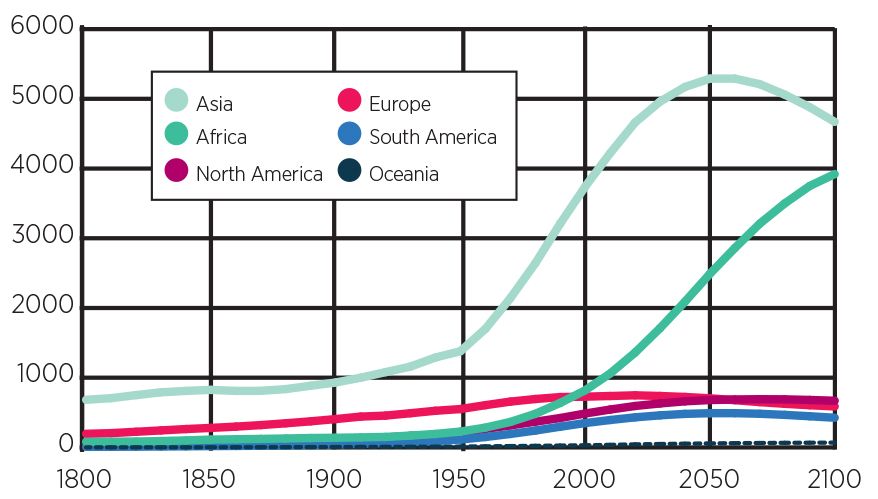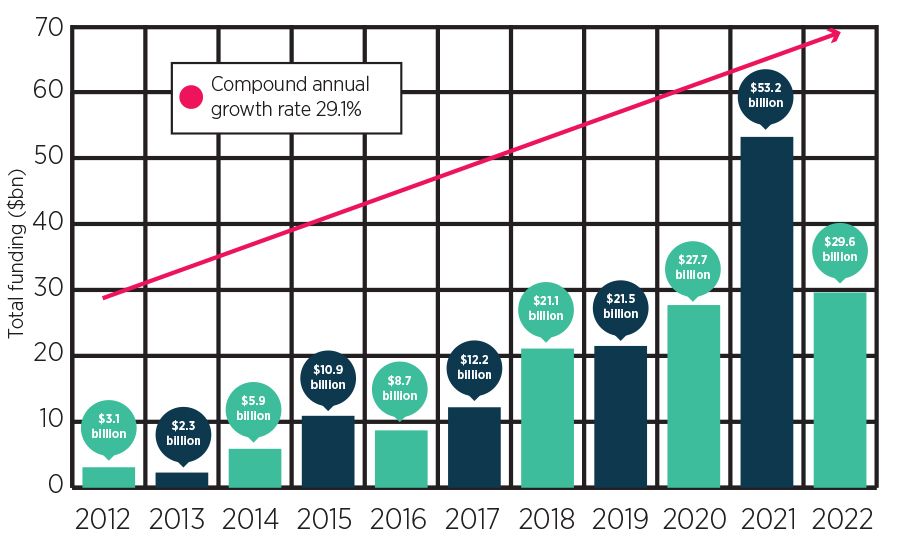Current agricultural practices require profound transformation. This is creating unprecedented opportunities across the global food value chain.
From daily bread to daily headline, food is a hot topic. Pasta shortages panicked shoppers during the pandemic, while surging inflation has fuelled steep increases in the cost of the weekly shop.
But what’s going on behind the scenes where consumers don’t usually see? After years of operating on outdated technology and production methods, the global agrifood system — which produces what’s on the world’s plate — has reached breaking point.
See also: – COP28: Food system declaration is ‘absolutely critical’
The ‘Green Revolution’ that spread globally until the late 1980s fuelled bumper increases in crop yields and agricultural production but at the expense of devastating impacts on nature and human health. Today’s agrifood systems are responsible for 30% of global greenhouse gas emissions and 70% of freshwater use, yet a third of all food produced is wasted. Current food production methods are also responsible for 80% of deforestation; are the primary driver of biodiversity loss; and have devastated soil quality. In Europe, 60-70% of all agricultural soils are degraded as a direct result of unsustainable management practices.
With the global population expected to grow to 10 billion by 2050, and food demand to rise by 60% in this time, these stresses on our food systems are set to hugely increase.
Is there hope? Yes, but agri and aqua-culture practices require urgent and profound transformation to reduce their harmful environmental impacts, provide a growing population with a sustainable diet, and adapt to the evolving pressures of climate change. This necessary transformation is creating unprecedented potential investment opportunities across the global food value chain.
Global population by region

Drivers of change
At the heart of the solution sit regenerative agricultural practices. These are systems of producing food that don’t just limit harm, but actively restore nature and reverse environmental damage. More importantly, regenerative practices offer a way to bolster food production while meeting climate goals through carbon sequestration and responding to the biodiversity targets set out in the Global Biodiversity Framework agreed at the COP15 in 2022.
Farming using regenerative principles encompasses methods such as minimum tillage to cover crops, planned grazing, agroecology, polycultures, permaculture and agroforestry. These methods reduce CO2 emissions while rendering farmland healthier and more resilient.
See also: – Turning over soil health
To give context to the enormity of the potential impact, a 15% per-year CO2 reduction would be equal to cutting 6x the annual total emissions of the global aviation industry.
Regeneratively grown foods also show significantly better nutritional profiles, thanks to improved soil health. The largest food multinationals are heavily investing in regenerative agriculture to reach CO2 neutrality by 2050.
Implementing agriculture 4.0
Technology has a huge role to play in accelerating the transition towards sustainability. Satellites, drones, robots and machine-learning technology are finding their place in fields to aid farmers in understanding their soil, improving its quality and refining the use of chemicals. Traditional farming practices, like raising cattle for beef, can be remodelled into less resource depleting approaches, such as high protein, low-carbon insect farming.
Closer to the consumer end of the process, blockchains and the internet of things (IoT) can support more efficient supply chains and reduce food waste.
In terms of what you and I can do to have an impact, changing dietary choices are drastically redesigning the typical plate. Plant-based proteins, fermented foods and seaweed products are already getting a lot of attention, while lab-grown meat and edible insects are at earlier stages of consumer acceptance. And there are lots more coming down the pipeline.
With the global population expanding, what we eat must evolve to yield more using fewer resources. Professor Walter Willett MD of the Harvard T.H Chan School of Public Health stated consumption of fruits, vegetables, nuts, and legumes will have to double by 2050, while consumption of red meat and sugar will have to reduce by more than 50% for improved health and environmental benefits.
A greener, healthier diet requires cultural adaption, which is being led by the younger generation. According to Deloitte, millennials make up 40% of food consumers and are keen to adopt digital solutions, while Gen Z increasingly seek plant-based alternatives and have a preference for mindful eating. They seek out brands that champion sustainable and traceable sources – they want to know exactly what’s on their plate and are highly conscious of the negative environmental effects of ‘big food’.
See also: – Brown or green recovery?
A cornucopia of opportunity
The agrifood tech innovation market has grown sixfold since 2012 and is forecast to reach $700bn by 2030. Three sectors are driving change around resilience and sustainability.
- Precision Farming – the shift to ‘agriculture 4.0’. Using technologies like drones and AI to improve resource efficiency, pesticide use, carbon sequestration and productivity in food production.
- Alternative nutrition – creating new food sources that are as attractive as today’s mainstream animal proteins.
- Food waste – targeting operational efficiency from sourcing through to warehousing and distribution, as well as upcycling traditionally wasted food elements into desirable products.
The amount of investment needed to transform our food systems is estimated by the Good Food Finance Network to total $300-350bn a year from now until 2030. This is a huge standalone figure, but for context, it seems relatively modest in comparison to the amount pledged to the Covid-19 recovery.
More importantly, it is dwarfed by the enormous potential business opportunities we expect to see in sustainable, healthy, equitable food investments and the societal value that these investments can unleash.
Global agrifood tech investment by year

The transformation of the global food system is underway with the agrifood opportunity enjoying high momentum despite a correction in 2022 as global markets retracted. We see the food system transformation as being at a similar stage to the energy sector a few decades ago, with unprecedented opportunities set to unfold.
Today’s macro environment looks most likely to fuel growth in companies that offer sustainable solutions that are also cheaper, more resilient, and faster to adopt than their analogues.
Lionel Artusio and Fabio Sofia are co-founders of Zebra Impact Ventures and managers of the Regenerative Growth strategy in partnership with Mirabaud Asset Management








